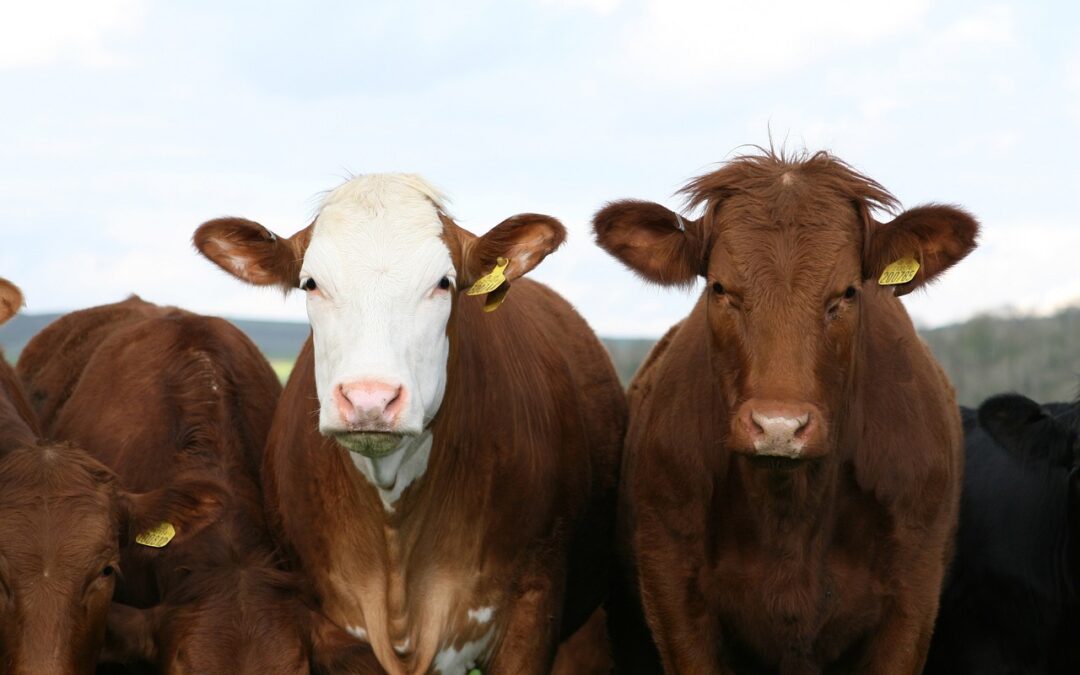Picture from pixabay.com.
Humans have been farming the land for thousands of years. In fact, as long ago as around 10,000 BCE, our ancestors traded in spears for shovels and transitioned from a hunter-gatherer society to a nomadic lifestyle. Since then, our agriculture practices have evolved. Unfortunately, so have our emissions from livestock, soils and fuel. So how are we going to decrease this number? Well, maybe we have already had one of the solutions available for centuries – seaweed!
History of Seaweed in Agriculture
Using seaweed in agriculture has a deep-rooted history that stretches across cultures and eras. In ancient coastal communities, farmers noticed the positive effects of seaweed residues on their crops and started incorporating it into their agricultural practices. We now know that this is because seaweed contains multiple bioactive molecules, and research has also proven its effect on plant growth. This includes improved crop yield, root structures, plant development and fruit set, as well as enhanced ability to tolerate plant disease and climatic stresses such as cold or drought (Arioli, Mattner and Winberg, 2015). Some seaweed extracts can also improve soil health and fertility (Nanda, Kumar and Hussain, 2021).
In the UK, the use of seaweed in agriculture has a historical and traditional foundation, particularly in coastal areas, where it has been used for centuries and practices passed down through generations. In Ireland, farmers and fishers with their lands adjoining the coast have for hundreds of years enjoyed the rights to harvest seaweed off the foreshore and intertidal zone to feed themselves and their domestic animals and also to build organic materials and soil as well as fertilise their plots of land, in particular their potato beds (Mouritsen et al., 2020). Unfortunately, seaweed practices were later associated with poverty and trying times, and some traditions were lost. However, the use of seaweed both as a fertiliser and animal feed has gotten more attention in later years as a way to reduce emissions from agriculture.
We have already covered why farmers used seaweed in their fields, but why did they feed seaweed to their animals? Whereas historically, it would bring valuable nutrients to their diet, seaweed is now increasingly used in feed to lower methane emissions from cattle and other farm animals. This is very important because methane is the second highest contributor to climate change after carbon dioxide. Limiting methane emissions is therefore necessary for achieving long-term climate goals and mitigating impacts in the next 20 years (Sawyer et al., 2022).

Picture from pixabay.com.
An Example From Norfolk
Some of our traditional uses of seaweed in agriculture have been lost or forgotten with the evolution of farming. However, with efforts to reduce agriculture emissions and ensure sustainable and organic farming, we are slowly rediscovering and enhancing the old seaweed traditions with help from modern technologies and innovation. Fortunately, investigating using seaweed in farming practices and cattle feed is already a focus in Norfolk, with several projects already taking place.
One of these projects is currently taking place at Holkham Estate, working with Norfolk Seaweed and Central Pharma Biotechnica, which specialises in agricultural biostimulants and biofertilisers. This year, the partners have been conducting field trials for the production of biostimulants from local seaweed. Additionally, Holkham Estate is keen to potentially trial seaweed applications in their cattle feed. This could be investigated using locally sourced seaweed, although native species of brown seaweed have been shown to reduce methane concentrations in cattle at a lower rate than red seaweed species typically found in tropical waters (Künzel et al., 2022). Ongoing and future research will hopefully highlight the best uses for Norfolk-grown seaweeds and enable us to considerably reduce methane emissions from the county in the future.

Picture from pixabay.com.
Seaweeds Future in Agriculture
Overall, using seaweed in agriculture contributes to healthier crops, improved yields, and more environmentally friendly farming practices. Seaweed can be cultivated at sea, and its use in agriculture aligns with sustainable farming practices, offering an eco-friendly alternative to synthetic fertilisers and can contribute to lowering our methane emissions if introduced to animal feed such as for cattle. Our farming ancestors had it right all along; now, we are responsible for using their traditional knowledge to save our globe.
Want to keep up to date with the SEA project? Check out our webpage for further blogs, useful links and project updates!
This blog was written with great help from Dr Elisa Capuzzo, SEA project contributor and Senior Marine Ecosystem Scientist at Cefas.
References:
1. Arioli, T., Mattner, S.W. and Winberg, P.C. (2015). Applications of seaweed extracts in Australian agriculture: past, present and future. Journal of Applied Phycology, [online] 27(5), pp.2007–2015. doi:https://doi.org/10.1007/s10811-015-0574-9.
2. Nanda, S., Kumar, G. and Hussain, S. (2021). Utilization of seaweed-based biostimulants in improving plant and soil health: current updates and future prospective. International Journal of Environmental Science and Technology. doi:https://doi.org/10.1007/s13762-021-03568-9.
3. Mouritsen, O.G., Rhatigan, P., Cornish, M.L., Critchley, A.T. and Pérez-Lloréns, J.L. (2020). Saved by seaweeds: phyconomic contributions in times of crises. Journal of Applied Phycology. doi:https://doi.org/10.1007/s10811-020-02256-4.
4. Sawyer, W., Genina, I., Brenneis, R., Feng, H., Li, Y. and Lennon Luo, S.-X. (2022). Methane emissions and global warming: Mitigation technologies, policy ambitions, and global efforts. MIT Science Policy Review, 3, pp.73–84. doi:https://doi.org/10.38105/spr.8u4spgvc0e.
5. Künzel, Susanne, et al. “Methane Reduction Potential of Brown Seaweeds and Their Influence on Nutrient Degradation and Microbiota Composition in a Rumen Simulation Technique.” Frontiers in Microbiology, vol. 13, 28 June 2022, https://doi.org/10.3389/fmicb.2022.889618. Accessed 13 Apr. 2023.


